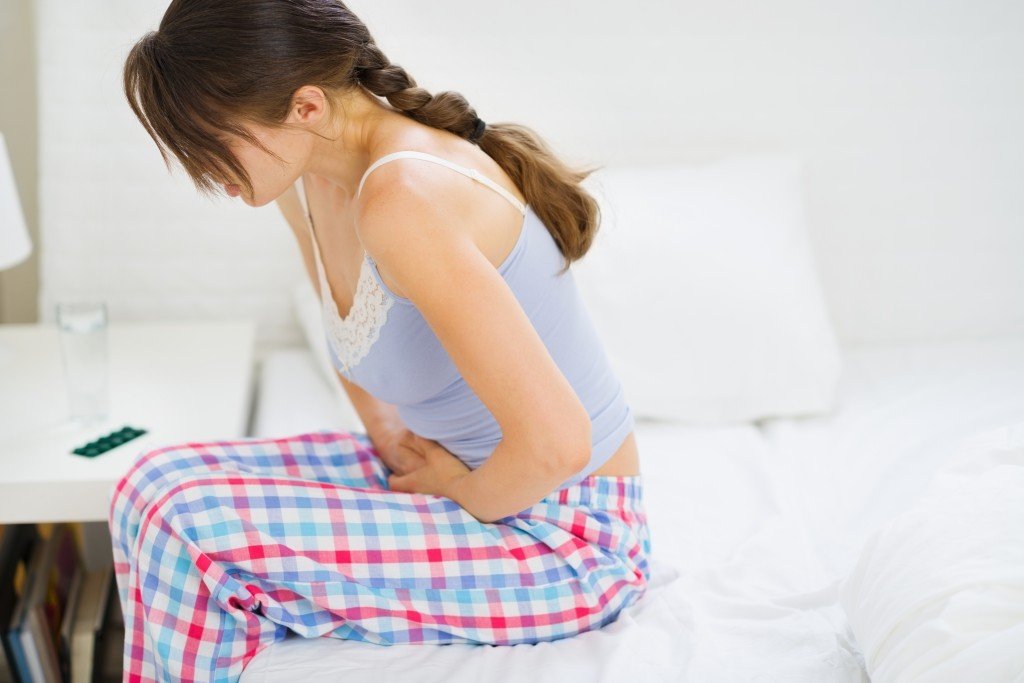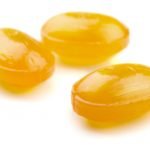Robin DiPasquale, ND, RH (AHG)
The menstrual period is a phenomenon of nature experienced only by women. For some, it is considered a sacred time, a time for a woman to connect with her rhythm and cycle with nature, to recognize that her body is working with the rhythm of the tides – a part of a bigger cycle in nature. In Native American culture, women go to the moon lodge during their bleeding time. This time away from regular daily life allows women to gather together, to nurture themselves and each other, and to be removed from the daily lives and needs of village life. In Traditional Chinese Medicine (TCM), the menstrual time is a time of least resistance, and the women were relieved of heavy tasks.
Menstruation & Western Culture
For others, however, menstruation is referred to as “the curse,” considered a hassle or inconvenience, in the least, a painful and depleting time when symptoms are expressing themselves in the extreme. In western culture there is no pause, no time away for women on their moon cycle, and, in fact, women are expected to not even skip a beat in the responsibilities and demands placed upon them. Additionally, there is an emphasis placed on managing the menstrual time in ways that make it seem invisible, hidden away, out of sight, or not there at all. Tampons collect the blood before it flows out, keeping the messiness within, with no bulky, uncomfortable pads in the way. Pain-relieving OTC medications containing various combinations of non-steroidal anti-inflammatories (NSAIDs), acetaminophen, diuretics, antihistamines, and caffeine are highly promoted. These are taken monthly by many women to get rid of the symptoms, only to have the cramps return the next month, along with the need to take more of them. The extreme invisibility, however, comes with the current trend of continuous use of oral contraceptives (without the 7 days off between cycles to allow bleeding), or some other hormonal forms of contraception that stops the period from happening altogether.
A Close Look at Menstrual Cramps
Period pain is common, but it isn’t normal. Women with regular menstrual cycles will bleed every month, a total of 12-13 times a year. If there is pain for 1, 2, 3, or more days of that menstrual period, that can add up to at least 1 full month every year of being in pain. Determining and treating the cause of dysmenorrhea can free women from this monthly pain, as well as help balance the interplay of hormones and their whole-body influence, throughout the entire menstrual cycle.
Primary dysmenorrhea is when the function of the uterine muscles is abnormal. This is often caused by muscle contractions being too strong or too frequent without a relaxation phase between contractions, resulting in decreased blood flow to the muscles, decreased oxygen, ischemia, and spasm. An imbalance of prostaglandins – primarily high PGE2 and PGF2-alpha – is often behind this pattern, initiated when progesterone levels fall at the end of a cycle.1Essential fatty acid (EFA) supplementation can bring balance to the prostaglandins. I often choose the EFA cycling approach, giving omega-3 EFAs during the follicular phase, and omega-6 EFAs during the luteal phase. Poor muscle tone, with a sense of heaviness and pelvic congestion, can occur after multiple or recent pregnancies and childbirth. Uterine tonic herbs are essential in this situation. Fibroid tumors, polyps, and adenomyosis can all interfere with uterine muscle contraction and relaxation. This requires hormonal balancing and careful consideration of surgical intervention, as necessary. Other contributors to pain are spasm at the cervix, leading to retention of menstrual fluids, clotting of blood that’s difficult to pass, pelvic congestion, constipation, or structural alignment issues like retroverted uterus or lumbosacral problems. Stress can play a contributing role.
Secondary dysmenorrhea has an underlying cause beyond the uterine muscles or structural issues, commonly inflammatory conditions such as endometriosis or pelvic inflammatory disease.
In TCM, dysmenorrhea is considered a result of chronic imbalances in the flow of qi and blood. In particular, liver qi deficiency, excess, or stagnation can have a significant influence on menstrual flow, resulting in painful periods. Spleen qi imbalance is reflected in digestive disturbances and sugar cravings, and kidney qi is responsible for ovulation. Maintaining qi and blood flow, and strengthening spleen and kidney qi, are the therapeutic goals.2
Nutrition & Physical Support for Dysmenorrhea
Nutritional support for painful periods should be focused on calcium and magnesium, and the vitamins essential for absorption and utilization of these minerals, including vitamins A, C, and D. Calcium plays a role in blood coagulation and the equilibrium of the nervous system, sympathetic in particular. Magnesium itself is antispasmodic, especially to smooth muscle. Rina Nissim writes that carrots are rich in vitamins A, B, C, as well as iron, calcium, sodium, potassium, and magnesium.3 Carrot juice taken daily during the week before the period can render menstrual blood more liquid, and periods less painful.
Heat and warmth are extremely effective in diminishing menstrual pain. Hot water bottle, hot bucky or rice pillow, or hot sea-salt poultice over the belly or sacrum can bring immediate relief, as can a hot bath. Orgasms can relieve cramping and move pelvic congestion. Moxibustion over the lower abdomen and low back moves qi and blood, clearing congestion. Mayan uterine massage or visceral manipulation can be very effective in bringing relief from pain, as well as working toward resolving chronic dysmenorrhea. Yoga asanas done throughout the month can be more effective than only at the time of menstrual cramping. One pose – the frog – is specific for strengthening the first and second chakra. Take a squatted position, feet slightly apart and toes pointed outward, hands on the floor. Inhale while straightening the legs, exhale while bending them, moving up and down, hands remaining on the floor, and do 21 repetitions up and down daily.
Herbal Remedies for Dysmenorrhea
Now, to the herbal medicines, which can be very effective in both relieving dysmenorrhea acutely, as well as rebalancing the hormones to prevent monthly occurrences.
Anodynes can be considered, especially as an alternative to the NSAIDs that are so frequently used. Some key anodyne herbs are Corydalis ambigua (a Papaveraceaefamily plant), Piscidia erythrina (Jamaican dogwood), Lactuca virosa (wild lettuce), and Anemone pulsatilla (pasque flower). Rina Nissim includes Achillea millefolium (yarrow) and Alchemilla vulgaris (lady’s mantle) in this category.3
The antispasmodic herbs are most effective when initiated before the spasms begin; therefore, if you know someone has recurring episodes of dysmenorrhea, be sure to begin the herbs 1 to 2 days ahead of the spasms. There are quite a few to consider, including Caulophyllum thalictroides (blue cohosh), Dioscorea villosa (wild yam), and Ligusticum wallichii (Szechuan lovage root). I want to focus on 2 herbs in particular, though–Viburnum sppand Humulus lupulus (hops).
Viburnum spp
Viburnum spp refers to several Viburnum species. Some herbalists will use them interchangeably; however, there are varying opinions about their individual characteristics. Both Felter and Ellingwood wrote extensively about Viburnum prunifolium (black haw), but very little about Viburnum opulus (cramp bark).4,5 Maude Grieve states that V opulus is weaker than the other species.6 Cook calls V prunifolium a good tonic for uterine weakness, while V opulus is classified as a gentle tonic and antispasmodic.7Although it is postulated that what is written about one is the same for the other, my own sense of the matter is that V prunifolium is more of a tonic herb, and is therefore best used daily throughout the entire month, while V opulus is best applied just before or at the time of the cramping.
The following is a reflection of various writings about V prunifolium.1,4,5,7,8 Viburnum is used for painful menses when there is debility with relaxation, or the tissues are engorged, and the pelvic tissue is relaxed, with congestion present. This is the stagnant qi and blood that is pointed out in TCM as a major contributor to dysmenorrhea. It is for atonic states of the female reproductive organs, and works as a sedative for spasmodic pain, especially for tubular organs and voluntary musculature. It promotes normal uterine contractions, and relaxations between contractions. Being a tonic for uterine weakness, improving uterine circulation, Viburnum is used for prolapses and flaccidness of the reproductive structures. It can tonify when there is passive hemorrhaging, but is not effective when polyps, fibroids or carinomatous tumors are present. Several authors have discussed Viburnum’s ability to prevent threatened miscarriages, its use as a partus prep, for preventing post-partum hemorrhage and insuring normal involution – all tonifying properties related to pregnancy and childbirth. One author suggested a use that surprised me, which is to control morning sickness in pregnancy. Perhaps this is tied to Viburnum exercising its influence in the nervous system. It is said to allay the nervous unrest so commonly associated with pelvic weakness. Jeremy Ross writes that Viburnum calms heart spirit and liver wind, referring to dysmenorrhea with nervous tension, vomiting, or hypertension.8 Viburnum can help to strengthen in cases of previous miscarriage, and can control the nervous phenomena associated with threatened miscarriage.1,4,5,7,8
One keynote specific to Viburnum opulus is pain that begins in the back, extends through the loins, and down the thighs.5 In these cases, I concur clinically the effectiveness of cramp bark, dosing at 1 dropperful of a 1:1 tincture every 15 minutes until the pain subsides, for 3-6 doses, depending on the individual.
Humulus lupulus
The strobiles of Humulus lupulus (hops) contain a potent phytoestrogen, 8-prenylnaringenin, with potentially greater estrogenic activity than other plant estrogens. These compounds have activity that may behave like a phyto-SERM, which may indicate amphoteric activity, affecting the hormonal balancing/rebalancing, as the body indicates. In one study, the flavonoid compounds were shown to possess anti-proliferative effects in vitro on cancer cell lines, suggesting potential chemo-preventative activity against breast and ovarian cancers in humans.9 Hops is a sedative, of course, used in insomnia. It has also been shown to be effective in treating hot flashes, sexual neurosis, and menstrual irregularities– more of a hormonal influence.10 As an antispasmodic, hops has been shown to antagonize contractions induced by oxytocin.11The challenge with hops, due to its extreme bitter taste, is finding a preparation that is palatable. During a lab experiment in the herb lab at Bastyr University, students found that a hops and peppermint tea combination was more pleasant-tasting compared to hops and any other combination of herbs, including multiple sweeteners which didn’t seem to mask the bitter taste.
Other Useful Herbs
Hormone-regulating herbs have an indirect effect on prostaglandin levels. Vitex agnus-castus (chaste tree) has been one of the most valuable of these herbs, particularly because of its progesterone influence. Dosing could be throughout the month or only during the luteal phase. Other herbs to consider as hormonal regulators are Actea racemosa (black cohosh), Salvia sclarea (clary sage), Angelica sinensis (dong quai), Paeonia lactiflora (white peony, which is often paired with Glycyrrhiza glabra, licorice), Verbena officinalis, (vervain), (Alchemilla vulgaris, (lady’s mantle), and one more herb that surprised me – Ribes nigrum (black currant).
In the category of uterine tonic herbs, 2 stand out: Rubus idaeus (raspberry) and Mitchella repens (partridge berry). My favorite emmenagogue is Artemesia vulgaris (mugwort). Prostaglandin-inhibiting herbs include Zingiber officinalis (ginger), Tanacetem parthenium (feverfew), and Curcuma longa (turmeric). The nervous system plays an integral part in the spasming of the reproductive organs, often thrown off-balance by stress. Nervines help relax the whole system, rippling down to the uterus. Leonurus cardiac (motherwort)supports female reproductive and cardiovascular systems; Valeriana officinalis, although not tolerated by everyone, acts as an antispasmodic as well; and Piper methysticum (kava) turns the anxiety meter way down. Remember to treat the liver; one of my favorite liver herbs is Bupleurum chinense.
Take note of each of the women in your practice. Ask again about their menstrual cycles and whether they are tolerating painful times each month. Let them know that period pain isn’t normal. Your tool box is extensive. Invite them to begin the journey of moving toward a life where “pain-free” is normal.
Robin DiPasquale, ND, RH (AHG), earned her degree in naturopathic medicine from Bastyr University in 1995 where, following graduation she became a member of the didactic and clinical faculty. For the past 8 years, she has served at Bastyr as department chair of botanical medicine, teaching and administering to both the naturopathic program and the bachelor of science in herbal sciences program. Dr DiPasquale is a clinical associate professor in the department of biobehavioral nursing and health systems at the University of Washington in the CAM certificate program. She loves plants, is published nationally and internationally, and teaches throughout the U.S. and in Italy on plant medicine. She is an anusara-influenced yoga instructor, teaching the flow of yoga from the heart. She currently has a general naturopathic medical practice in Madison, WI, and is working with the University of Wisconsin Integrative Medicine Clinic as an ND consultant. [email protected]
References
- Trickey R. Women, Hormones & the Menstrual Cycle. Crow’s Nest NSW, Australia: Allen & Unwin; 2003.
- Steelsmith L. Natural Choices for Women’s Health. New York, NY: Three Rivers Press; 2005.
- Nissim R. Natural Healing in Gynaecology. New York, NY: Pandora Press, in association with Methuen, Inc; translated from French to English, 1986 and 1996.
- Felter HW. The Eclectic Materia Medica, Pharmacology, and Therapeutics. Cincinnati, OH; 1922. Reprinted Sandy, OR: Eclectic Medical Publications; 1994.
- Ellingwood F. American Materia Medica, Therapeutics, and Pharmacognosy. Cincinnati, Ohio; 1919. Reprinted Sandy, OR: Eclectic Medical Publications; 1998.
- Grieve M. A Modern Herbal. New York, NY: Dover Publications Inc; 1971.
- Cook WH. Physio-Medical Dispensatory: A Treatise on Therapeutics, Materia Medica, and Pharmacy. Cincinnati, OH;1869. (self-published)
- Ross J. Combining Western Herbs and Chinese Medicine. Seattle, WA: Greenfields Press; 2003.
- Miranda CL, Stevens JF, Helmrich A, et al. Antiproliferative and cytotoxic effects of crenelated flavonoids from hops (Humulus lupulus) in human cancer cell lines. Food Chem Toxicol. 1999;37(4):271-285.
- Ocamoto R, Kumai A, Antigonadotrophic activity of hop extract, Acta Endocrinol. 1992;127(4):371-377.
- Cabo Torres J, Bravo Diaz L. Pharmacodynamic study of hops (Humulus lupulus). IV. Antioxytocic activity. Ars Pharm. 1971;12(3-4-5-6):191-201.






